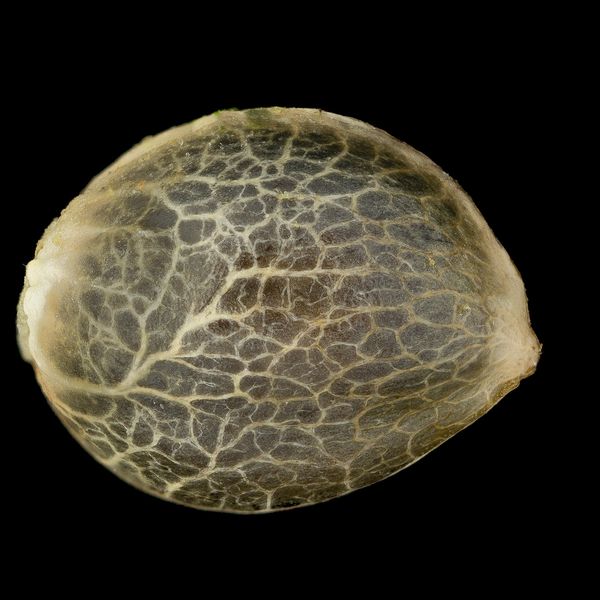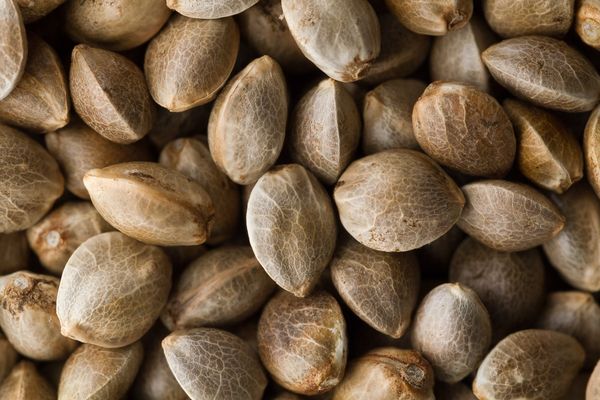- Cannabis seeds are a product that we must keep in the best condition possible to prevent them from suffering the slightest damage.
- As a living organism, we must follow a set of guidelines for them to reach planting time in optimal condition.
- If light, moisture and temperature conditions are deficient, their germination capacity can be affected.

They are where it all begins. The care you give your cannabis seeds will determine not only how your plants grow, but also the final results of your harvest. As we are dealing with a natural product that needs to develop, the conditions under which it is stored will have an impact on their subsequent yield. Thus, though marijuana seeds are quite robust and autonomous, if you want to avoid unwanted setbacks when you plant them, you should take steps immediately after obtaining them.

Storage temperature: 6° C / Germination temperature: 24° C
Note these two temperature limits to calibrate the range in which you operate. Keep in mind that the ideal temperature to store seeds is around 6 to 8° C. Hence, the most expert growers have a refrigerator just for this purpose, with low temperatures being constantly maintained. The same is true with regards to humidity: if you do not want your seeds to suffer any damage it is advisable to keep them in places with a relative humidity of around 20-30%.
To keep your seeds in a cool place you'll only have to make some space for them in your refrigerator at home (if it is a no-frost model, and in the fruits and vegetables crisper, even better), though ensuring that it is dry enough for their proper preservation will be a bit more complicated.
Humidity control via micro conservation in Eppendorf tubes
To keep humidity low, it is ideal to have some sealable containers on hand. To do this, a highly recommended option is to use Eppendorf tubes, a standard piece of laboratory equipment used for the preservation of liquid samples, and the very ones in which we provide our customers with our seeds.

These are small cylindrical containers with conical bottoms, made of polypropylene, and with hermetic seals. With this method of micro conservation the containers full of seeds are protected individually, in such a way that, even if there are variations in the outside atmosphere, inside the container the humidity conditions are constant.
To ensure this we place small pearls of silica gel inside the tubes so that, even if the outdoor humidity rises, or the temperature varies, we can be confident that the air is completely dry inside. The cap of the Eppendorf guarantees that no humidity gets in, but the silica gel also ensures that, if any were to penetrate it by accident, it would be immediately absorbed by this material.
If you do not have any of these containers, you can always use some opaque and airtight plastic bottles, which will also do the trick. Inside, along with seeds, it is a good idea to place some dry rice or silica crystals, separated from them by means of a cotton ball or paper. These elements will absorb moisture from the atmosphere, which, depending on one's location, can be around 25% or higher.
Run from the light
You must not forget that light is another of the factors that directly impact seed germination. Therefore, you must be sure that you prevent light from shining on the seeds that you will later be planting. If exposed to light, they can lose much of their germinative power. This is why at Dinafem we place our Eppendorf tubes in opaque metal boxes, which protect the seeds from light and any possible crushing or breakage during their transportation or handling.
If you follow these guidelines you can preserve your seeds for several years. In fact, there are experts who contend that, if storage conditions are ideal, there are seeds that will last for up to a decade.
Labelling the different strains, essential to differentiate between them
It may seem obvious, without a doubt, but don't forget to label the different strains you have. Once you store the seeds in their containers you should only open them to plant them. It is not advisable to open and close the container you are using, as the protection your seeds are provided is immediately lost once it is opened, and fluctuations in temperature and humidity can be highly detrimental.
It is not advisable to open and close the container you are using
Labelling the strains you have is even more vital if you cannot see the seeds. This can be the case if, for example, you follow the advice of some growers, who instruct more inexperienced growers to store their seeds in analogue film tubes. In cases like this you can simply stick a small label on it and jot down with a pencil the name of the strain in each tube, which should be placed, in turn, inside a piece of Tupperware to prevent its contents from deteriorating.
Other tips for storage
If you do not plan to store your seeds for a long time, but rather intend to plant them and harvest them as soon as possible, perhaps it will not be necessary to steal space from your fruits and vegetables in your refrigerator. Some recommended storing seeds in a closet located in a dark part of the house, where the natural light of day does not affect them too much, and so that they are kept dry and, more or less, cool. This location can be a good choice as long as you are going to plant your seeds soon.
Whether you choose to store your seeds in a refrigerator designed exclusively for their maintenance, or in a dark corner of your house, you will have to pay attention to other risks that can end up damaging them. Many experienced growers stress that seeds must be dried correctly and left under proper humidity conditions to prevent mould from appearing inside the receptacles. To keep this from occurring, in addition to drying the seeds properly, it is a good idea to always use silica gel when storing them.
Some potential hazards
Another threat that can ruin all your efforts are insects. Just one in your container is enough to render all the seeds inside useless. To prevent this it is advisable to spread diatomaceous earth where you store them. D.E. is a kind of sand with a fossilised algae base. It is inert and non-toxic, and functions as an invaluable natural insecticide. If you keep your seeds in your fridge with other foods, this will not be a good place to use this type of substrate. However, if you have a refrigerator just for this purpose, or a simple closet, you will be able to use this trick.

If a container you are using is left open, and a rodent somehow gets into your house, the consequences can be dramatic, both for you and your harvest, of course, because the animal will enjoy a great feast at your expense. This is why, among other things, something as simple as placing your containers up high can be a good way to prevent such disasters.
There are many factors to keep in mind when it comes to storing cannabis seeds. Keeping an eye on the temperature, light and humidity is vital, as they can affect your seeds' germination capacity; if they normally germinate within 48 to 72 hours, when stored under poor conditions it can take up to 6 to 7 days. Or never. But this is not enough. You must also protect them from other external agents that, without your knowledge, can end up ruining your next harvest, or one you had planned for a later date.



Comments from our readers
Did you like this post?
Your opinion about our seeds is very important to us and can help other users a lot (your email address won't be made public).